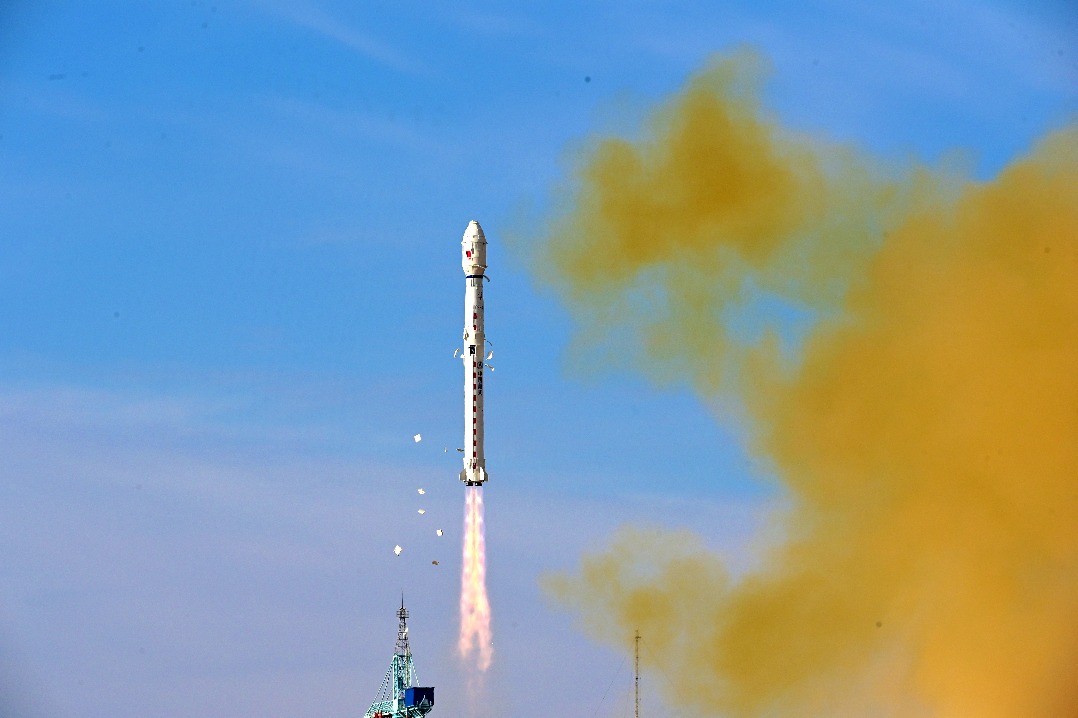Crane drivers keep trade flowing during festival


In the bridge crane operation center at Chongqing's Guoyuan Port, Hu Wanqi and his colleagues are busy moving containers around the yard via a long-distance operation system.
The bridge crane operators stare at their screens, stacking, moving, loading and unloading containers using joysticks and a computer mouse.
"We work around the clock during the Spring Festival holiday to ensure smooth transportation at the port," said Hu, the assistant director of the bridge crane operation department at Chongqing Guoyuan Container Terminal.
Situated on the upper reaches of the Yangtze River, Guoyuan Port is the largest container river port in the country. The comprehensive transportation hub includes railways, highways and waterways, and is home to 16 ship berths that can handle vessels that can carry as much as 5,000 metric tons of cargo.
The port, which has attracted 10.5 billion yuan ($1.6 billion) in investment, can each year handle 30 million tons of bulk cargo, and can facilitate as many as 1 million commercial vehicles each year to deliver or pick up cargo.
In 2023, the port had a container throughput of 990,000 twenty-foot equivalent units, a year-on-year increase of 2.9 percent.
Chongqing, a municipality of 32 million people, boasts key geographic advantages as a strategic transport hub in the national development program for China's western regions, as well as being an intersection point of trade and projects involved in the Belt and Road Initiative and the Yangtze River Economic Belt.
During his inspection trip to Chongqing in 2016, President Xi Jinping said the municipality would become an inland international logistics hub. "This is full of promise," he said while inspecting Guoyuan Port.
Hu, who operated a bridge crane to move a container from the yard to a ship in front of President Xi in 2016, is a National Model Worker who has been working in the field for 17 years.
An average bridge crane operator can move about 15 containers per hour, but Hu is capable of moving more than 25 thanks to his rich experience and superb skills.
In 2016, he worked with the technology innovation and long-distance operation system team to enhance the efficiency and working conditions of the operators. Now the operators no longer need to work inside the tiny driver's box on the bridge cranes themselves but in a comfortable indoor operation center.
There are 42 operators and 32 bridge cranes at the port, and one operator can control three to four bridge cranes at the same time, said Hu. "Safety is our priority, especially during the holiday," he added.
Besides routine daily checks on the machinery and the operation system, the operation center conducted a fire drill before the Spring Festival holiday.
Though container truck drivers will take breaks during the holiday and no new containers will come to the port yard by land, the bridge crane operators still need to unload and stack the containers from the ships to the yard.
"The port never rests," Hu said.
- Probe identifies cause of tragic Hebei nursing home fire
- Safety breaches, substandard materials, management failures caused Fuzhou accident: report
- Cutting edge UAV completes maiden flight in Sichuan
- Hainan registers record flow of foreign visitors
- Hebei discovery sheds light on development of Stone Age tools
- Lion parade sparks debate at Anhui zoo





































